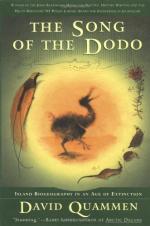
|
| Name: _________________________ | Period: ___________________ |
This quiz consists of 5 multiple choice and 5 short answer questions through Message From Aru.
Multiple Choice Questions
1. How did Wallace put Darwin in a tough spot, according to Quammen?
(a) By telling him about his work.
(b) By publishing his theory first.
(c) By having looked at Darwin's theories before he published his own.
(d) By having used some of Darwin's observations in his own work.
2. How does Quammen describe Aru?
(a) Urban.
(b)
(c) Interconnected.
(d) Isolated.
3. How does Quammen's tone change in the final chapter?
(a) His discomfort with habitat loss is finally made screamingly clear.
(b) His narrative is filled with detailed scientific observations.
(c) His description of the trip is not scientific, just tourism.
(d) His even-handedness gives way to persistent pessimism about the destruction of habitat.
4. How does Quammen say islands are sometimes formed?
(a) Earthquakes.
(b) Rise in sea level.
(c) Volcanic activity.
(d) Seismic upthrust.
5. What does Quammen say increases as individuals breed with genetically similar individuals?
(a) Congenital flaws.
(b) Anxiety and reproductive complications.
(c) Birth defects.
(d) Hostility in breeding.
Short Answer Questions
1. What is a minimum viable population?
2. How would you describe Quammen's narrative of the dodo's decline and extinction?
3. What was Bedo's reputation?
4. What does Quammen says Charles Darwin and Alfred Wallace had in common?
5. What environment is NOT analogous to an island, according to Quammen?
|
This section contains 280 words (approx. 1 page at 300 words per page) |

|




